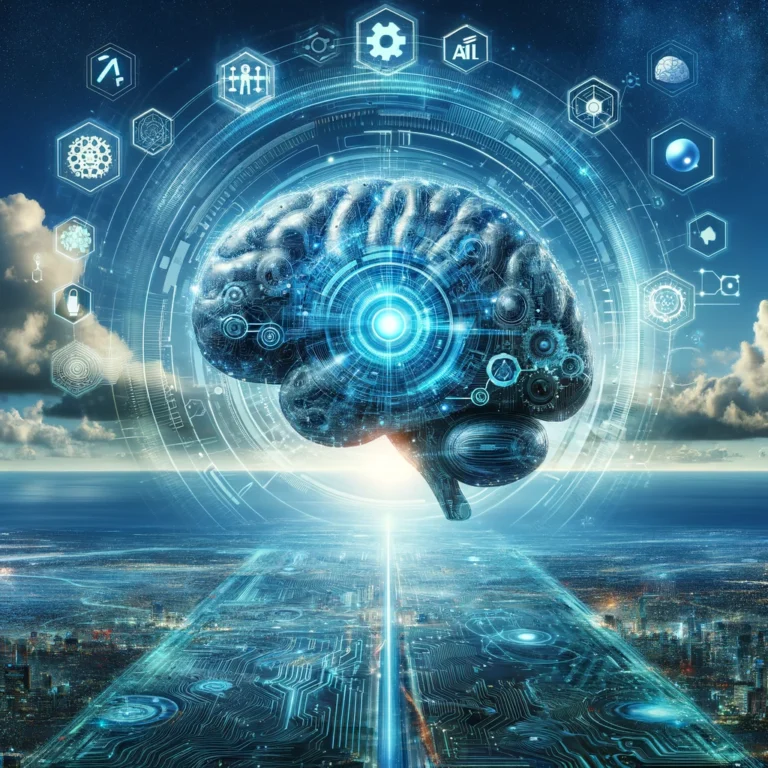IEEE Machine Learning Projects
The Institute of Electrical and Electronics Engineers (IEEE) is a renowned professional organization dedicated to advancing technology for the benefit of humanity. With a global presence and a diverse membership base, IEEE plays a crucial role in promoting research, standardization, and professional development across various technological domains, including machine learning.
Basic Concepts of Machine Learning and its Significance
Machine learning is a rapidly evolving field of artificial intelligence that enables computers to learn from data and make intelligent decisions without being explicitly programmed. It involves developing algorithms and statistical models that can identify patterns, make predictions, and improve their performance over time. Machine learning has revolutionized numerous industries, from healthcare and finance to transportation and entertainment, by enabling data-driven decision-making and automated processes.
2. Understanding Machine Learning Models
Supervised vs. Unsupervised Learning
Machine learning models can be broadly classified into two categories: supervised and unsupervised learning.
- Supervised Learning: In this approach, the model is trained on labeled data, where the inputs and their corresponding outputs are provided. The goal is to learn a mapping function that can accurately predict outputs for new, unseen inputs. Examples include image classification, speech recognition, and regression analysis.
- Unsupervised Learning: This approach involves learning from unlabeled data, where the model seeks to discover inherent patterns, structures, or relationships within the data. Common applications include clustering, dimensionality reduction, and anomaly detection.
Deep Learning and Neural Networks
Deep learning, a subset of machine learning, has gained significant attention due to its remarkable performance in various domains. It involves the use of artificial neural networks, which are inspired by the structure and function of the human brain. Deep neural networks can automatically learn hierarchical representations from raw data, enabling them to tackle complex tasks such as image and speech recognition, natural language processing, and game playing.
Model Evaluation and Selection
Selecting the appropriate machine learning model and evaluating its performance are crucial steps in any project. Various evaluation metrics, such as accuracy, precision, recall, and F1-score, are used to assess the model’s performance on different tasks. Techniques like cross-validation, holdout sets, and hyperparameter tuning help in fine-tuning the model and ensuring its generalization capabilities.
3. Data Preparation Techniques
Data Collection and Cleaning
The quality and relevance of the data are critical for successful machine learning projects. Data collection involves gathering data from various sources, such as databases, APIs, or sensor networks. Data cleaning is the process of handling missing values, removing duplicates, and addressing inconsistencies or errors in the data.
Feature Engineering and Dimensionality Reduction
Feature engineering involves selecting and transforming relevant features from the raw data to improve the model’s performance. Dimensionality reduction techniques, such as Principal Component Analysis (PCA) and t-SNE, help in reducing the number of features while preserving the most important information, improving computational efficiency and reducing overfitting.
Handling Imbalanced Datasets
In many real-world scenarios, datasets can be imbalanced, where one class is significantly underrepresented compared to others. Techniques like oversampling, undersampling, and class weight adjustment can be employed to mitigate the effects of imbalanced data and improve the model’s performance on minority classes.
4. Project Management in Machine Learning
Defining Project Scope and Objectives
Clearly defining the project scope and objectives is crucial for the successful implementation of machine learning solutions. This includes understanding the problem domain, identifying stakeholder requirements, and setting measurable goals and success criteria.
Dataset Selection and Ethical Considerations
Selecting the appropriate dataset is essential for training accurate and reliable machine learning models. Additionally, ethical considerations, such as data privacy, bias, and fairness, must be addressed to ensure responsible and trustworthy AI systems.
Tools and Frameworks for Machine Learning Development
Various open-source and commercial tools and frameworks are available for developing machine learning applications. Popular choices include Python libraries like TensorFlow, PyTorch, and scikit-learn, as well as cloud-based platforms like Google Cloud AI, Amazon SageMaker, and Microsoft Azure Machine Learning.
5. Machine Learning in Healthcare
Predictive Models for Disease Diagnosis
Machine learning can play a vital role in healthcare by enabling accurate and early disease diagnosis. Predictive models can analyze patient data, such as medical history, symptoms, and test results, to identify potential health risks and recommend appropriate treatments.
Medical Image Analysis
Deep learning techniques have shown remarkable performance in medical image analysis, including X-rays, CT scans, and MRI scans. These models can assist radiologists in detecting and diagnosing diseases, as well as monitoring patient progress and treatment effectiveness.
Patient Data Privacy and Security
Ensuring patient data privacy and security is a critical concern in healthcare applications of machine learning. Appropriate measures, such as data anonymization, encryption, and access control mechanisms, must be implemented to protect sensitive patient information.
6. Machine Learning in Finance
Fraud Detection Systems
Machine learning algorithms can be trained to identify patterns and anomalies in financial transactions, enabling effective fraud detection systems. These models can analyze large volumes of data in real-time, improving the accuracy and efficiency of fraud prevention efforts.
Algorithmic Trading Strategies
Quantitative trading firms leverage machine learning techniques to develop algorithmic trading strategies. These models can process vast amounts of financial data, identify market trends and opportunities, and execute trades automatically based on predefined rules and conditions.
Credit Scoring Models
Machine learning models can improve credit scoring processes by analyzing historical data and identifying patterns that indicate borrower creditworthiness. These models can help financial institutions make more informed lending decisions and manage risk more effectively.
7. Natural Language Processing (NLP) Projects
Sentiment Analysis
Sentiment analysis involves the use of machine learning algorithms to determine the sentiment or emotional tone behind text data, such as product reviews, social media posts, or customer feedback. This information can be valuable for businesses to understand customer opinions and make data-driven decisions.
Machine Translation
Machine translation systems rely on deep learning models to translate text or speech from one language to another. These models can be trained on large datasets of parallel text, enabling accurate and efficient language translation for various applications, including international communication and content localization.
Chatbots and Virtual Assistants
Conversational AI systems, such as chatbots and virtual assistants, are powered by natural language processing and machine learning techniques. These systems can understand and respond to user queries in natural language, enabling efficient and personalized customer service, information retrieval, and task automation.
8. Computer Vision and Image Processing
Facial Recognition Systems
Facial recognition technology leverages machine learning models to identify and verify individuals based on their facial features. These systems have applications in security, surveillance, and various identification processes, but also raise privacy and ethical concerns.
Autonomous Vehicle Navigation
Machine learning and computer vision techniques are essential for autonomous vehicle navigation. These systems can process sensor data, such as camera feeds and LiDAR scans, to detect and classify objects, plan routes, and control the vehicle’s movement in real-time.
Augmented Reality Applications
Augmented reality (AR) applications use computer vision and machine learning to overlay digital information and virtual objects onto the real-world environment. These applications have numerous use cases in gaming, education, retail, and industrial settings, enhancing user experiences and facilitating data visualization.
9. Machine Learning for IoT and Smart Cities
Predictive Maintenance for Industrial Equipment
Machine learning models can analyze sensor data from industrial equipment to detect anomalies, predict failures, and recommend preventive maintenance actions. This approach can improve equipment reliability, reduce downtime, and optimize maintenance schedules, leading to cost savings and increased operational efficiency.
Energy Consumption Optimization
Machine learning techniques can be applied to optimize energy consumption in buildings, cities, and industrial facilities. By analyzing data from smart meters, weather sensors, and occupancy patterns, these models can identify inefficiencies and recommend strategies for reducing energy usage and improving sustainability.
Traffic Flow Analysis and Management
Smart city initiatives often leverage machine learning for traffic flow analysis and management. Models can process data from traffic cameras, sensors, and GPS systems to predict congestion, optimize signal timing, and recommend alternative routes, improving overall transportation efficiency and reducing emissions.
10. Ethical Considerations and Future Trends
Bias and Fairness in Machine Learning Models
As machine learning systems become more pervasive, addressing issues of bias and fairness is crucial. Biases can arise from various sources, including training data, algorithm design, and deployment contexts. Techniques like adversarial debiasing, causal modeling, and interpretable machine learning can help mitigate these biases and ensure fair and equitable decision-making.
Explainability and Transparency
While machine learning models can achieve impressive performance, understanding their decision-making processes can be challenging, especially for complex deep learning models. Explainable AI (XAI) aims to develop techniques that make machine learning models more interpretable and transparent, enabling better trust, accountability, and compliance with regulations.
Future Directions in Machine Learning Research
Machine learning is a rapidly evolving field, with ongoing research pushing the boundaries of what is possible. Areas of active research include federated learning, which enables collaborative model training while preserving data privacy, and few-shot learning, which aims to build models that can learn from limited data. Additionally, the integration of machine learning with other emerging technologies, such as quantum computing and brain-computer interfaces, holds promise for groundbreaking applications.
Conclusion
Machine learning has proven to be a transformative technology, enabling data-driven solutions across various domains. IEEE’s commitment to advancing research and fostering collaboration has played a crucial role in driving innovation in this field. As machine learning continues to evolve, addressing ethical considerations and embracing responsible AI practices will be essential for ensuring its positive impact on society.
FAQs
What is the difference between supervised and unsupervised learning?
Supervised learning involves training models on labeled data, where the desired outputs are known. Unsupervised learning, on the other hand, focuses on finding patterns and relationships in unlabeled data without predefined outputs.
How does deep learning differ from traditional machine learning?
Deep learning utilizes artificial neural networks with multiple layers to automatically learn hierarchical representations from raw data. Traditional machine learning methods often rely on manually engineered features and simpler models.
What are some common challenges in machine learning projects?
Common challenges include data quality issues, imbalanced datasets, overfitting or underfitting models, computational resource constraints, and addressing bias and fairness concerns.
How can machine learning be applied in healthcare?
Machine learning can be applied in healthcare for tasks such as disease diagnosis, medical image analysis, drug discovery, and predictive modeling for personalized treatment recommendations.
What ethical considerations should be addressed in machine learning projects?
Key ethical considerations include data privacy and security, algorithmic bias and fairness, transparency and accountability, and the responsible development and deployment of AI systems.
What are some future trends in machine learning research? Future trends include federated learning, few-shot learning, integration with quantum computing and brain-computer interfaces, and the development of interpretable and trustworthy AI systems.














yes sure